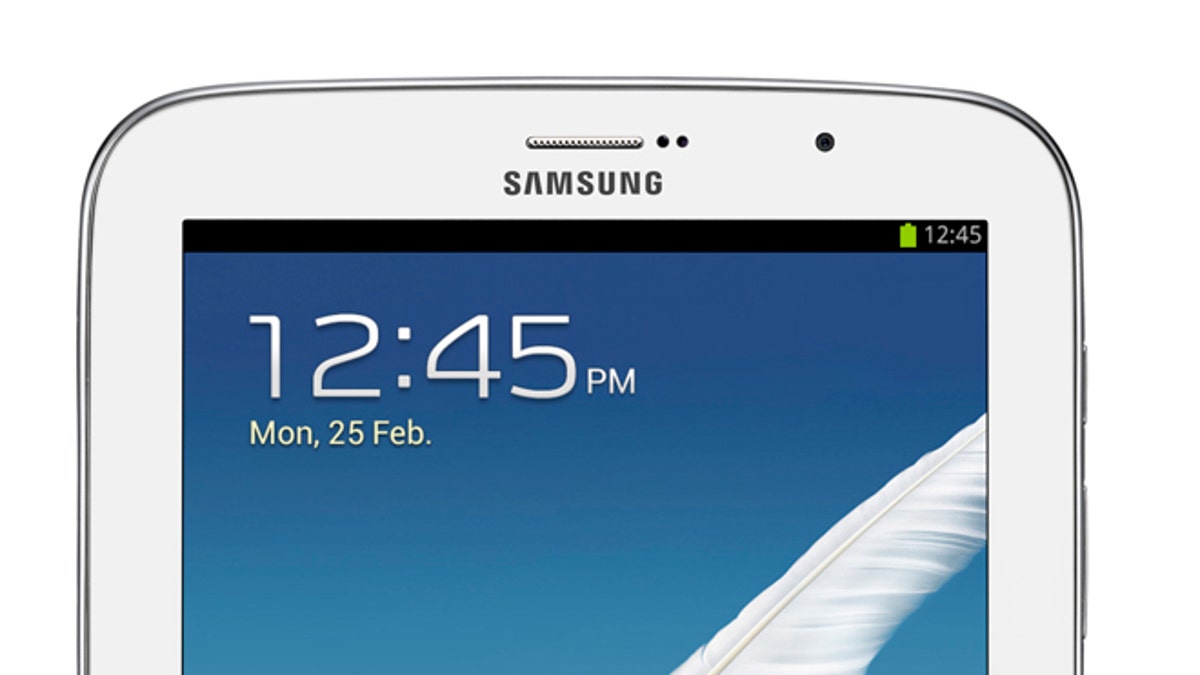
The Samsung Galaxy Note 8, a new tablet from the Korean company that sports a pen for writing on the screen. (AP Photo/Samsung)
The age of the feature phone is over.
For the first time ever, global smartphone shipments are expected to outpace those of feature phones by the end of 2013, making smartphones the predominant mobile phone around the world.
According to IDC, the smartphone shipments will make up 52 percent of all worldwide smartphone shipments by year's end. Smartphone shipments are expected to grow by roughly 33 percent in 2013, topping out at 959 million units moved, an increase from last year's 723 million units.
IDC says there are multiple reasons for the change including consumer demand, the availability of smartphones at varying price points, a greater emphasis by consumers on data usage. These factors have driven more and more mobile phone makers to transition their product portfolios to emphasize smartphones rather than feature phones.
MORE: Top 10 Smartphones
The increase in demand for smartphones from emerging markets is also a major factor. As a result, the average selling price of a smartphone has seen a sharp decline from $443 in 2011 to $327 in 2013. At that rate, IDC says smartphone prices could fall as low as $309 by 2017.
"Smartphones have become increasingly common in emerging markets and it is often the first affordable means of computing for these markets," IDC's Ryan Reith explained. "These are markets where average personal income is far less than in developed markets, and therefore vendors have been forced to create smartphone computing experiences for the low end of the market."
So how are smartphone makers keeping prices so low? By continuing to rely on the sale of 3G-enabled handsets. IDC says 3G smartphones will make up 71 percent of all smartphones moved in 2013 and 50 percent in 2017.




















